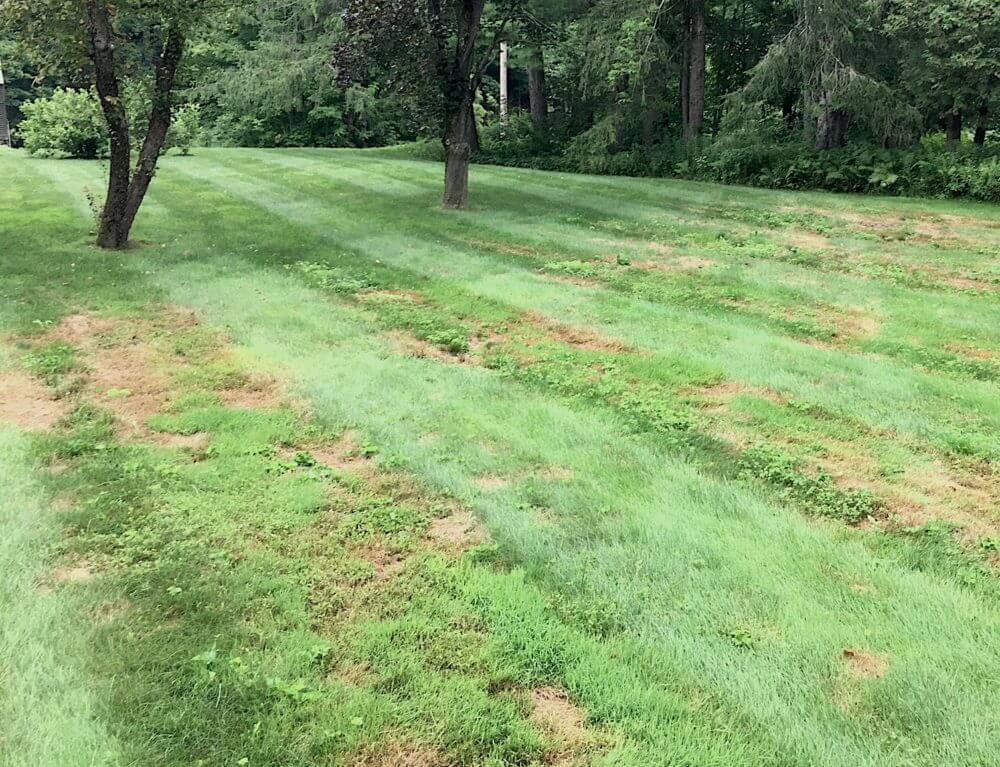I have been called to review a half dozen lawns just this week and found the homeowners perplexed over expanding brown patches that appear as drought/heat stress – perhaps even grubs. The photo above is one such example. However, this damage is from chinch bugs, very small insects found in the lawn’s thatch layer and on the surface. Left untreated, chinch bugs will continue to damage and kill grass well into late fall and will reappear next spring.
Indications of Chinch Bugs
If you are looking at unusual browning, areas that have a hazy brown tan tint, areas of telltale razor stubble from dead plants collapsing, or brown that is expanding in any way, it is likely more than drought and heat stress. We have had a lot of rain recently and if your brown areas are expanding or not showing any signs of recovery, this could be a red flag
Why This Year?
The dry June was followed by a very hot and dry July, perfect weather for the surface-dwelling, sun-loving chinch bug. These ideal breeding conditions set the stage for the most activity I have seen in 8-10 years. The reason lawn damage can be so thorough is because chinch bugs can have up to two generations a year, spring and late summer. We are now into the second generation.
What They Look Like
Chinch bugs are very small and not easily seen. If you suspect chinch bug damage, the only way to confirm is to find the villains. Adult chinch bugs have a white diamond on their backs, the rest of their small bodies are black. Nymphs are smaller and often red, orange, or black depending upon their level of maturity. Full blown infestations, as I have seen this week, often exhibit all stages and colors.
How Lawns are Damaged
Chinch bugs pierce and suck grass blade juices, leaving the surface with what I call razor stubble – tufts of dead grass on the surface. Chinch bugs are truly vampires as they suck the life out of your lawn from within, leaving brown patches in their wake as they move onto fresh grass. If left untreated, their population will continue to expand causing even more damage the following year. I’ve met countless homeowners who found out the hard way in year two as their once healthy lawns turned into oceans of dead, brown grass. Chinch bug damage, in my opinion, can be the most complete, as they are able to destroy an entire lawn from corner to corner in mere weeks.
Treatment
Chinch bugs should be treated because they will not go away until a lawn is basically gone. A spray treatment works best for immediate and effective control.
Loam and Reseeding Required
The damage chinch bugs cause usually requires new loam and reseeding. The extent of the renovation depends on how quickly the problems is addressed. If you are doing a lawn renovation, be sure to treat for chinch bugs, because they would love nothing more than more fresh grass to eat.
Act Now
If you notice your once healthy lawn is not doing well, contact your local lawn care professional to diagnose if you have a chinch bug issue. Acting sooner than later is in the best interest of your lawn and overall budget because spraying is much more economical than a lawn renovation!


